A cup of hot chai for good health!:
What is the one solution to all problems? Tea. Long day at work; nothing beats it like a cutting chai on the way back home. Sick day blues; what better than cozying up on the couch with a good book and a steaming cuppa? Stuck at home while it pours cats and dogs outside? Chai and bhajiyas, isn’t it obvious? As Willian Ewart Gladstone succinctly puts it, ‘If you are cold, tea will warm you; if you are too heated, it will cool you; If you are depressed, it will cheer you; If you are excited, it will calm you.’
After water, tea is the second most consumed beverage in the world. Originating in China, tea has made its way around the world since the 16th century and managed to capture the attention and admiration of doctors and poets alike.
Technically speaking, tea is an aromatic beverage prepared by steeping the leaves of the plant Camellia Sinensis in hot water. It has a slightly bitter and astringent taste with a cooling sensation. There are only four varieties of this plant – Black, White, Green and Oolong. Other adaptations like chamomile and lavender tea are prepared without the use of this particular plant and labeled as Herbal Teas or tisanes.
A beverage loved and appreciated the world over; tea does deliver on the health front in all aspects. Tea contains catechins that have anti-inflammatory and neuro-protective properties. An amino acid, L-theanine known to promote a calm, alert and focused mental state in humans is the reason tea produces a soothing effect on consumption. People with a history of consuming green tea were found to report lower rates and risks of cardiovascular diseases, some forms of cancer, reduction of blood pressure and osteoporosis. Thanks to the ample presence of anti-oxidants, consumption of tea is said to result in improved resistance to bacteria and viruses and fortification of the immune system. Caffeine, quite evidently, improves alertness and stimulates nervous activity.
According to the amount of processing the tea leaf undergoes, tea can be classified into:
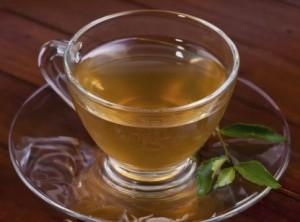 White Tea – This is the least processed tea. The leaves and buds are carefully picked while they are still young. The fine silver hair on the yet to mature buds gives the tea its name. Drying in the natural sunlight prevents them from oxidation which is sometimes supplemented by lightly baking them in ovens. On being steeped, the tea imparts a pale-yellow appearance and a slight sweet taste to the beverage. White tea contains the same health benefits as the other types but it is particularly rich in anti-oxidants. The Silver Needle and the Darjeeling tea are the most loved (and expensive) varieties amongst White teas.
White Tea – This is the least processed tea. The leaves and buds are carefully picked while they are still young. The fine silver hair on the yet to mature buds gives the tea its name. Drying in the natural sunlight prevents them from oxidation which is sometimes supplemented by lightly baking them in ovens. On being steeped, the tea imparts a pale-yellow appearance and a slight sweet taste to the beverage. White tea contains the same health benefits as the other types but it is particularly rich in anti-oxidants. The Silver Needle and the Darjeeling tea are the most loved (and expensive) varieties amongst White teas.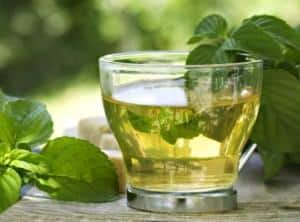 Green Tea – The leaves are harvested in three installments in a year. Known as ‘flushes’, the first flush delivers the best quality among all. Mature leaves are plucked and sorted according to their size and steamed or pan-fried. Care is taken to ensure that the leaves go through minimal oxidation to retain maximum polyphenols and anti-oxidants. The level of caffeine is also less pronounced than it is in Black Tea. This is followed by rolling the leaves in different shapes by hand or machines before they are left to dry and be packed. Green Tea is a particular favorite amongst dieticians and fitness expert as it helps in increasing the metabolism, resulting in weight-loss. It is continually being incorporated into diets, cuisines as well as cosmetics in the recent past.
Green Tea – The leaves are harvested in three installments in a year. Known as ‘flushes’, the first flush delivers the best quality among all. Mature leaves are plucked and sorted according to their size and steamed or pan-fried. Care is taken to ensure that the leaves go through minimal oxidation to retain maximum polyphenols and anti-oxidants. The level of caffeine is also less pronounced than it is in Black Tea. This is followed by rolling the leaves in different shapes by hand or machines before they are left to dry and be packed. Green Tea is a particular favorite amongst dieticians and fitness expert as it helps in increasing the metabolism, resulting in weight-loss. It is continually being incorporated into diets, cuisines as well as cosmetics in the recent past. 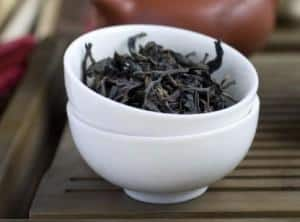 Oolong Tea – The leaves are allowed to undergo oxidation from levels ranging from 8% to 85%. Oxidation is then suppresed by allowing the leaves to wither and dry under the strong sun or by directly firing them before being curled and rolled. The colour of the leaves can differ from almost black to dark green. The taste of Oolong teas cover a wide spectrum based on the level of oxidation of the leaves. Ranging from sweet with fruity aromas, to woody with grassy under-notes, the style of production and processing influences the taste. High quality Oolong can be steeped more than once. In fact, it has been found that the taste improves significantly by the 3rd or 4th iteration. Oolong is especially popular among connoisseurs because of its varied taste palate. (Read:Health benefits of drinking tea)
Oolong Tea – The leaves are allowed to undergo oxidation from levels ranging from 8% to 85%. Oxidation is then suppresed by allowing the leaves to wither and dry under the strong sun or by directly firing them before being curled and rolled. The colour of the leaves can differ from almost black to dark green. The taste of Oolong teas cover a wide spectrum based on the level of oxidation of the leaves. Ranging from sweet with fruity aromas, to woody with grassy under-notes, the style of production and processing influences the taste. High quality Oolong can be steeped more than once. In fact, it has been found that the taste improves significantly by the 3rd or 4th iteration. Oolong is especially popular among connoisseurs because of its varied taste palate. (Read:Health benefits of drinking tea)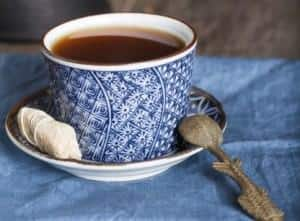 Black Tea – Over 90% of all tea sold worldwide, is black. This is primarily because of its ability to retain flavor for years as opposed to green which has a shelf life of a year. This tea goes through the most processing. After picking, the leaves are dried in the sun till they wilt. The leaves are then crushed to expose the tissues to air. The compounds therein react with the air and are allowed to ferment till they are completely oxidized. During this time, the leaves gain their black colour. The temperature and humidity are rigidly controlled according to standardized parameters. After a final bout of drying, the leaves are sorted with respect to leaf size into whole leaves, fannings and dust. Darjeeling, fondly called the ‘Champagne of Teas’ produces the world’s finest black tea, followed by the Anhui province in China.
Black Tea – Over 90% of all tea sold worldwide, is black. This is primarily because of its ability to retain flavor for years as opposed to green which has a shelf life of a year. This tea goes through the most processing. After picking, the leaves are dried in the sun till they wilt. The leaves are then crushed to expose the tissues to air. The compounds therein react with the air and are allowed to ferment till they are completely oxidized. During this time, the leaves gain their black colour. The temperature and humidity are rigidly controlled according to standardized parameters. After a final bout of drying, the leaves are sorted with respect to leaf size into whole leaves, fannings and dust. Darjeeling, fondly called the ‘Champagne of Teas’ produces the world’s finest black tea, followed by the Anhui province in China.
Herbal Tea – Also known as tisanes, they are concoctions of herbs, spices, roots, flowers and fruits in hot water, for the medicinal properties of each ingredient. Although, they are referred to as teas, what sets them apart is the absence of Camellia Sinensis or tea leaves in the beverage. They may have a low anti-oxidant level than real teas, but according to the ingredients used, tisanes can have several fragrant, therapeutic and stimulating effects.
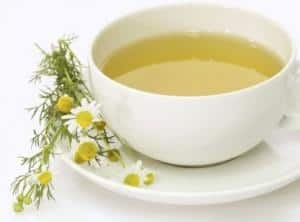 Chamomile is a popular herb that’s used in teas worldwide. Chamomile soothes the stomach and relieves bloating and indigestion. Chamomile also calms the mind and helps people relax and deal better with their stresses. Chamomile is known to fight insomnia by relaxing the body and the mind, enabling the person to fall asleep naturally.
Chamomile is a popular herb that’s used in teas worldwide. Chamomile soothes the stomach and relieves bloating and indigestion. Chamomile also calms the mind and helps people relax and deal better with their stresses. Chamomile is known to fight insomnia by relaxing the body and the mind, enabling the person to fall asleep naturally.
Ginger tea both stimulates and soothes the digestive system. Ginger has been known to aid people experiencing nausea. Arthritic people have found ginger tea helpful since it has anti-inflammatory properties. Probably that’s why, Adrak wali chai is the most used phrase in Indian households.
Lavender tea is made out of the dried purple, pink and white colored flowers that grow on lavender shrubs. A cup of lavender tea can soothe your mind and body, inducing sleep. It helps soothe and treat flatulence, colic, bowel infections and an upset stomach.
Dried Hibiscus flowers are made into a tea that is known to lower blood pressure, reduce high cholesterol and strengthen the immune system (it’s rich in Vitamin C). Hibiscus flower infusions have known to reduce hypertension as well. A recent study reveals that hibiscus tea is rich in antioxidants, which protect the body against cell-damaging free radicals.
PS: Marijuana is a herb too and they make weed tea!
8 herbal teas:
Herbal teas are known for their refreshing flavour and calming properties. They are prepared either by mixing herbs with tea or by simply brewing the herbs. Besides being gentle and readily available, they are also associated with number medicinal and therapeutic properties. Here is a list of top 8 herbal teas with great health benefits you can brew and enjoy.
Peppermint tea:
Peppermint tea is mild and is very refreshing. The main component of the tea is peppermint oil which contributes to all the therapeutic effects. The tea is rich in minerals like calcium, magnesium and potassium and contains very low calories. It is best known for its properties to soothe the stomach and promote digestion. A warm glass of peppermint tea can also help to effectively relieve nausea [1]. You can easily find dried peppermint leaves in ayurvedic stores and even in some drug store.
Steps to brew – For 1 cup peppermint tea:
- In boiling water, put 2 tablespoons of dried peppermint leaves
- Let it steep for 15-20 minutes and then strain
- You can add some sweetener according to your taste and enjoy your hot cup of tea
Chamomile tea:
Chamomile tea is mild and reviving. It is found very powerful to treat a number of maladies. It has sedative properties that can relieve both sleeplessness and anxiety. It has also been shown to be helpful in relieving skin conditions such as dermatitis and eczema[2]. Dried chamomile flowers can be found in most grocery stores.
Steps to brew – For 1 cup chamomile tea:
- In a cup of hot water, put 2-3 tablespoons of dried chamomile flowers
- Allow it to infuse for a few minutes
- With the help of a strainer, strain the liquid into another cup
- You can add some honey or lemon juice according to your taste
Lemon balm tea:
This herb belongs to the mint family and has been used for centuries to treat indigestion, anxiety and sleep disorders. This herb is good for the digestive system and is helpful in reducing flatulence and indigestion. Being antispasmodic in nature, it is also effective ineasing menstrual cramps. Lemon balm is a medicinal plant and can be found in any ayurvedic store.
Steps to brew – For 1 cup lemon balm tea:
- Add a teaspoon of the dried herb into boiling water
- Now steep it for 10-15 minutes and remove the leaves using a strainer
- You can sweeten the tea with honey
Ginger tea:
Ginger tea is known for its prized medicinal benefits. It is best known for its ability to fight nausea. It has anti-inflammatory properties that can help to relieve muscle soreness after exercise. Drinking ginger tea during periods can also be helpful in reducing menstrual pain.
Steps to brew - For 1 cup ginger tea:
- Slice ginger into thin pieces
- Now bring a cup of water to boil and add the ginger slices
- Let it steep for 10 minutes, then strain the water to remove the ginger
- Add honey or fresh lemon juice, as per preference
Alternately, you can also add some ginger to your tea leaves, steep for a few minutes and then strain.
Lavender tea:
Lavender is known for its bright purple flowers and pleasant aroma. Lavender is an antidepressant, expectorant analgesic and an antiseptic. Lavender tea is primarily used to ease anxiety, insomnia, stress and depression. The tea is also good for relieving indigestion and nausea. Many nurseries in India grow lavender plant and they are available in their dried form in ayurvedic stores. You can also find tulsi lavender tea in stores or for purchase online.
Steps to brew - For 1 cup lavender tea:
- Bring a cup of water to boil and put 2 tablespoons of dried lavender flowers
- Now allow it to steep for good 4-5 minutes
- Strain and serve the lavender tea with honey or sliced lemon
Lavender tea bags are also a convenient way to enjoy lavender tea.
Lemongrass tea:
Lemongrass tea has a strong lemony fragrance. Lemongrass contains a lot of volatile oils that are rich in antioxidants and can protect your cells from damage caused by free radicals. It also has anti-inflammatory properties and can help to reduce pain in conditions such as arthritis. Lemongrass tea leaves are easily available at grocery stores. Dried lemongrass can also be found in ready-to-use tea bags from stores.
How to brew - For 1 cup lemongrass tea:
- Add 2 tablespoons of tea leaves in boiling water
- Steep it for 10 minutes until the tea becomes golden-brown in colour
- Strain and add honey to the tea if you have a sweet tooth
Rosehip tea:
Rosehip is the fruit of rose plant that is typically red or orange in colour. It not only has beauty benefits, but it can also ward off many diseases. Being rich in vitamin C and flavonoids, rosehip tea has good antioxidant properties. Antioxidants can play a role in preventing arthritis, heart diseases and cancer. It is also a rich source of vitamin A which is an immune system booster [4]. You can find rosehip fruit in stores. You can also directly brew the Lipton rosehip tea if you can’t find the fruit.
Steps to brew - For 1 cup rosehip tea:
- Boil a cup of water in a bowl and place a handful of dried rosehips in the bowl of boiling water
- Leave the rosehips in the boiled water and let it steep for 10-15 minutes
- Strain the water and drink the tea immediately before it gets cold
Cardamom tea:
Cardamom is often added in teas for a strong and refreshing flavour. Cardamom tea has been used as a digestive aid for centuries. It is also an effective herbal remedy for treating worms in your intestine. Cardamom can help you detoxify your body and flush out toxins from your digestive and circulatory systems.
Steps to brew - For 1 cup cardamom tea:
- Crush a handful of cardamom seeds
- In boiling water, add tea leaves, the crushed cardamom seeds and some milk
- You can add a little sugar to sweeten
- Boil the mixture for five minutes so that the flavours infuse
- Strain and enjoy your delicious cardamom tea.If you do not find these dried herbs or teas, you can also opt for flavoured tea bags that offered by various brands.
No comments:
Post a Comment